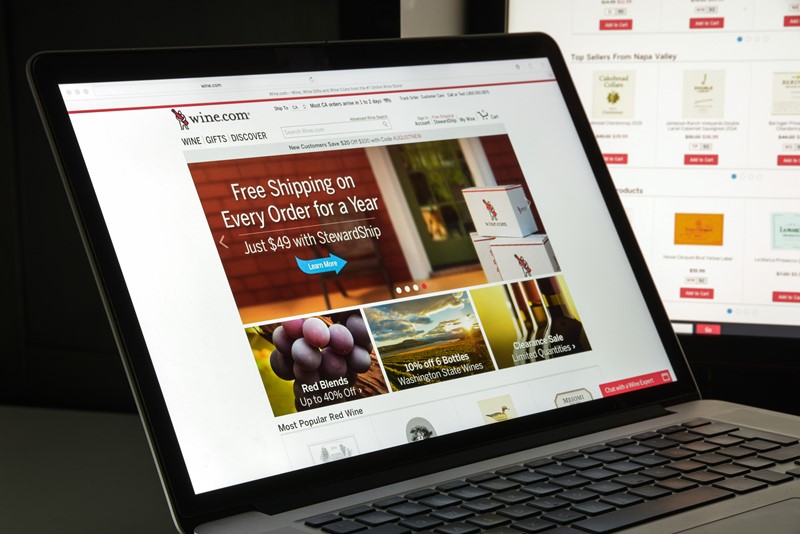Mastering Wine Marketing: strategies and tips for wineries
Marketing insights for today's wineries
2023-07-31

The world of business is constantly evolving, and while some industries seem immune to the winds of change, in reality, no sector can afford to remain static. Among the oldest industries, the wine industry is no exception. It is a sector deeply rooted in tradition, with products that have accompanied humanity throughout millennia. Yet, in the modern world, even wineries need to adopt effective marketing strategies to stand out and appeal to today's discerning consumers.
The Ancient Beverage in a Contemporary Market
Wine, a millennia-old beverage, has consistently graced our tables, celebrations, and rituals. Its rich history is entwined with that of human civilization itself. But this storied past can sometimes be a double-edged sword, as the aura of tradition might obscure the necessity of modern marketing strategies. In an increasingly competitive wine market, it's no longer just about the quality of the drink; presentation and promotion play equally pivotal roles.
Know Your Audience: The Cornerstone of Effective Marketing
Understanding your potential and existing clientele is the initial step toward enhancing wine sales. For instance, if a winery is focused on producing high-quality wines, its target audience is likely those who value premium wines and are ready to pay the price they command. Many wineries, especially the smaller ones, falter by offering top-quality wines at reduced prices aimed at the mid or low-income brackets. Contrary to this, aligning price with quality and targeting the appropriate audience can yield better results. In essence, marketing strategies should cater to the correct consumer segment, presenting wines as an exclusive choice tailored for them.
Audience Segmentation: Precision in Targeting
After pinpointing your audience, the next step is segmentation based on specific characteristics, preferences, and consumption habits. Differentiating between young or mature consumers, novices or connoisseurs, traditionalists or innovators is essential for targeted outreach.
Crafting a Strong Brand Identity
The essence of a winery should resonate in its brand. From label design to the name selection, every brand element should unify in portraying a distinct and consistent image. It's vital to foster a visual and verbal identity that genuinely encapsulates the wine's values and character. Consistency across all consumer touchpoints, from the physical bottle to online social media presence, is paramount.
Delivering the Right Product
Beyond marketing, the intrinsic qualities of the wine play a significant role. The wine should provide a gratifying sensory experience, aligning with the tastes and demands of its targeted audience. For younger consumers, for instance, the ideal wine might be lighter, easy-to-drink, and affordable.
Positioning: Carving Out a Unique Space
Much like a tech developer would struggle launching a high-speed internet search tool against the likes of Google, wineries must define their unique value proposition. Attributes such as quality, origin, variety, price, design, and history can be leveraged. However, the distinguishing factors must be discernible by the consumer, not just the producer.
Distribution: Getting the Wine to the Consumer
Choosing the right channels to deliver wine to the end consumer is crucial. While traditional avenues like specialized stores or supermarkets remain relevant, digital platforms such as e-commerce sites or online marketplaces are gaining traction.
Promotion and Customer Engagement
Promotion should stir interest and demand. Tools at a winery's disposal range from advertising and public relations to tastings and events. Further, establishing lasting relationships with customers, fostering loyalty, and maintaining constant, two-way communication can be pivotal. Digital tools, including email marketing, social media, and reward programs, can be instrumental.
Tips for Wineries Aiming for Enhanced Marketing:
- Deep Customer Insight: Undertake market research to understand motivations, needs, and expectations.
- Continuous Innovation: Introduce novel products that surprise and add value for consumers.
- Narrative Power: Use storytelling to emotionally connect with consumers, conveying the wine's essence.
- Digital Imperative: Ignoring digital means is a missed opportunity. Harness connectivity to expand message reach and interact with consumers.
- Engage in Events: Participation can expand your audience, glean competitive insights, and gather feedback.
- Measure to Improve: Assess data from marketing actions to gauge effectiveness and implement enhancements.
Marketing is an indispensable part of a successful business model. For wineries, it's a balance of understanding the audience, forging a robust brand, engaging consumers, establishing a formidable online presence, and delivering unique experiences. With these strategies in place, wineries can fortify their position in the competitive wine market and achieve greater commercial success.
Founded in 2007, Vinetur® is a registered trademark of VGSC S.L. with a long history in the wine industry.
VGSC, S.L. with VAT number B70255591 is a spanish company legally registered in the Commercial Register of the city of Santiago de Compostela, with registration number: Bulletin 181, Reference 356049 in Volume 13, Page 107, Section 6, Sheet 45028, Entry 2.
Email: [email protected]
Headquarters and offices located in Vilagarcia de Arousa, Spain.